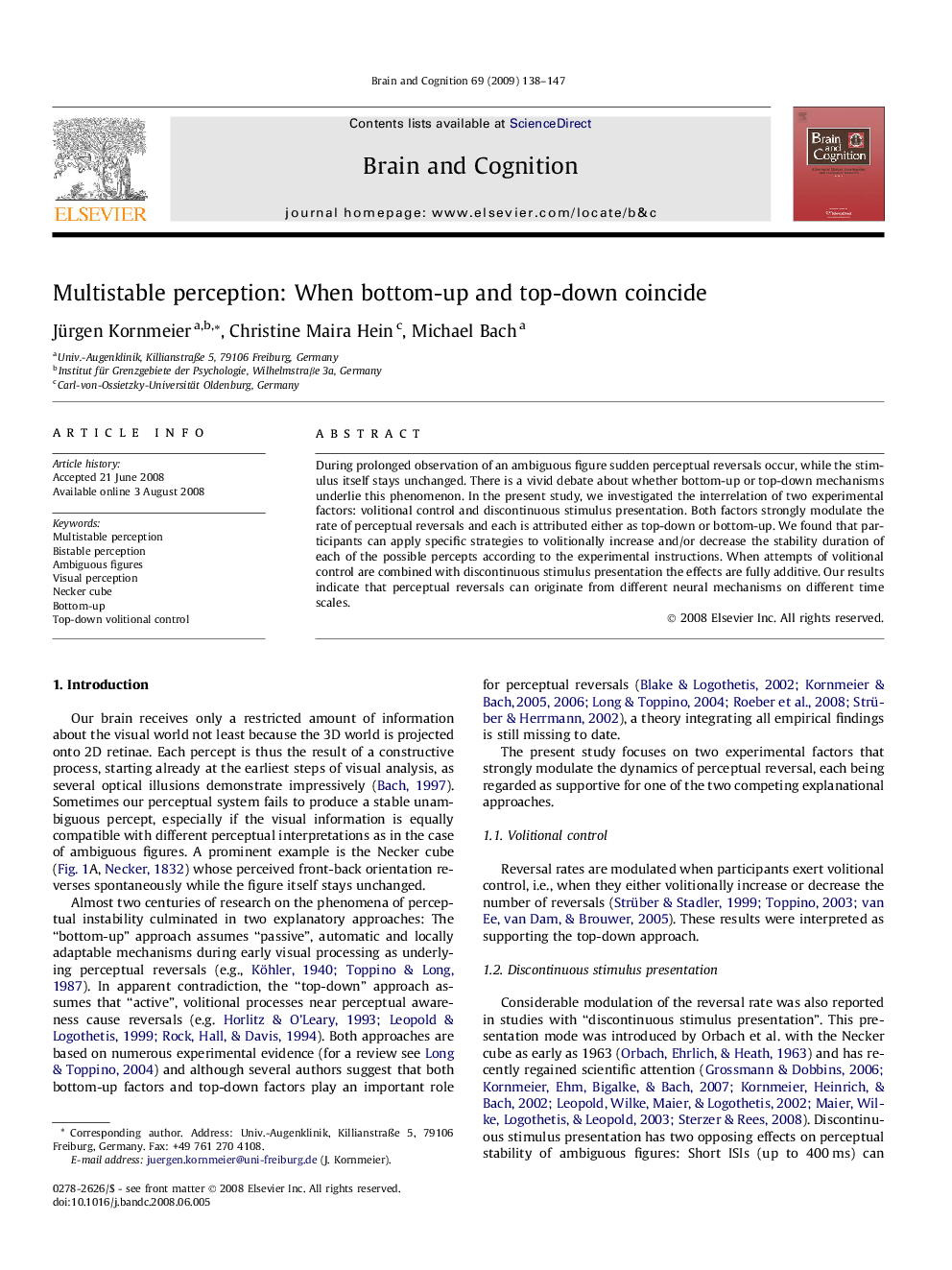| Article ID | Journal | Published Year | Pages | File Type |
|---|---|---|---|---|
| 10455737 | Brain and Cognition | 2009 | 10 Pages |
Abstract
During prolonged observation of an ambiguous figure sudden perceptual reversals occur, while the stimulus itself stays unchanged. There is a vivid debate about whether bottom-up or top-down mechanisms underlie this phenomenon. In the present study, we investigated the interrelation of two experimental factors: volitional control and discontinuous stimulus presentation. Both factors strongly modulate the rate of perceptual reversals and each is attributed either as top-down or bottom-up. We found that participants can apply specific strategies to volitionally increase and/or decrease the stability duration of each of the possible percepts according to the experimental instructions. When attempts of volitional control are combined with discontinuous stimulus presentation the effects are fully additive. Our results indicate that perceptual reversals can originate from different neural mechanisms on different time scales.
Keywords
Related Topics
Life Sciences
Neuroscience
Cognitive Neuroscience
Authors
Jürgen Kornmeier, Christine Maira Hein, Michael Bach,
